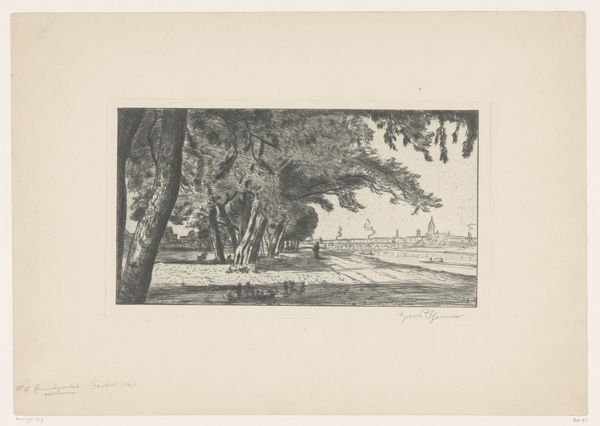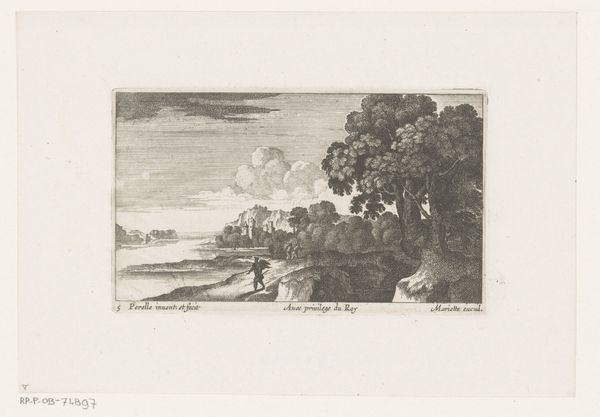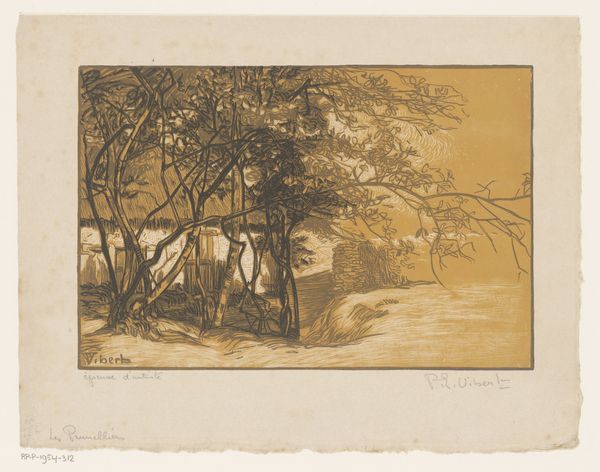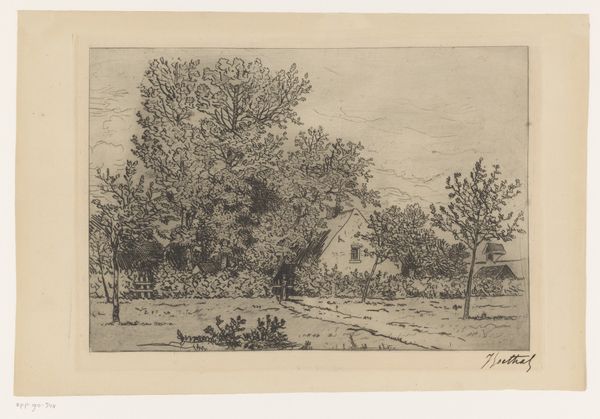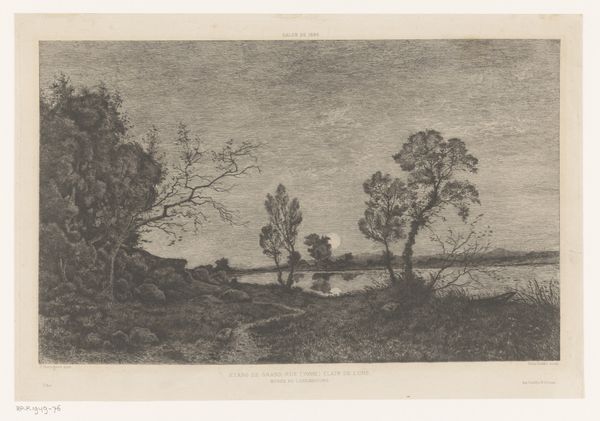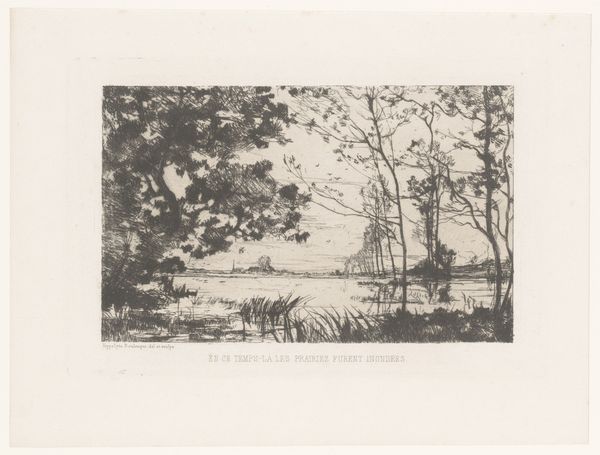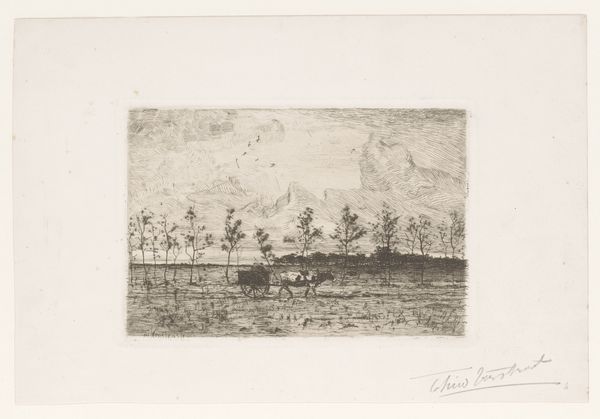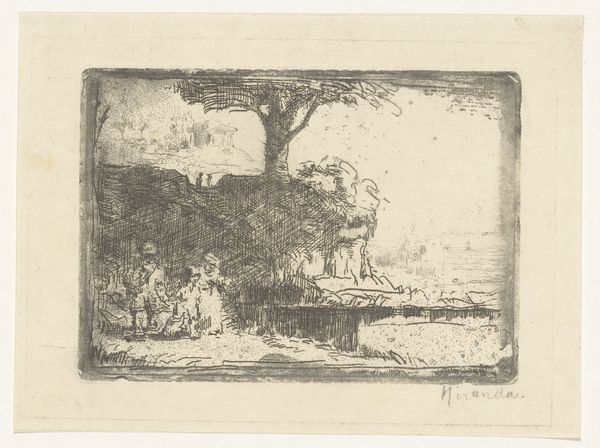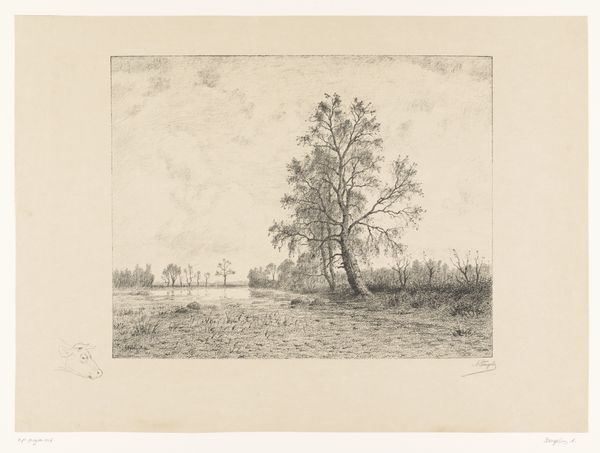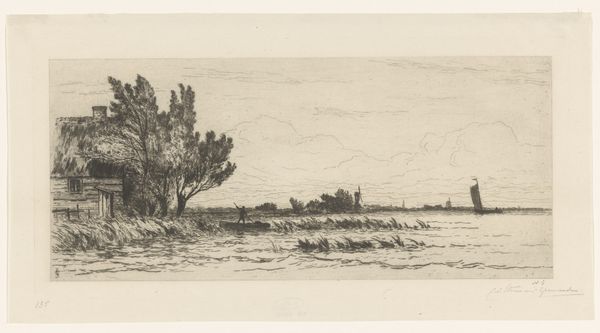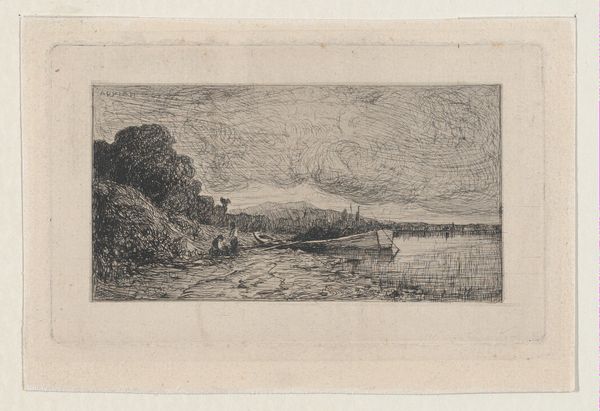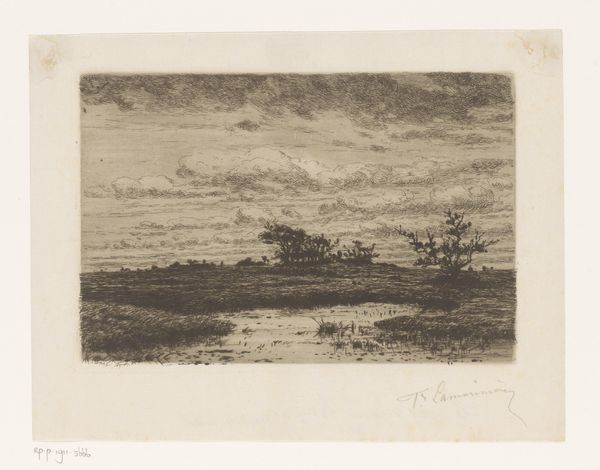
Dimensions: Plate: 5 13/16 × 11 11/16 in. (14.7 × 29.7 cm) Sheet: 6 3/4 × 12 3/8 in. (17.2 × 31.4 cm)
Copyright: Public Domain
Curator: Let's turn our attention to Sir Hubert von Herkomer's etching, "Broken Tackle," from 1891, presently held at the Metropolitan Museum of Art. What are your initial thoughts? Editor: The composition immediately strikes me. The stark contrast between the dark, almost claustrophobic foreground and the serene, distant town evokes a powerful sense of longing, or perhaps isolation. It's a surprisingly moody piece for a seemingly pastoral scene. Curator: The artist employs a fascinating interplay of textures here. The densely etched foliage on the left creates a tangible weight, sharply juxtaposed against the relative smoothness of the water and sky. This textural contrast establishes a clear spatial hierarchy. Editor: Indeed. That solitary figure, partially obscured by the tree, appears almost trapped within the dense undergrowth. Is he meant to represent thwarted ambition? Or perhaps a commentary on man's limited control over nature's forces? Curator: The etching medium lends itself particularly well to this dramatic contrast, the artist uses dense marks to represent shadows and areas where the tone creates dark patches in some zones in contrast with the whiter surface. There's a distinct absence of half-tones, enhancing the work's overall graphic impact. Editor: I’m drawn to the architecture on the opposite shore. The steeple, puncturing the sky, serves as a powerful, almost aspirational, symbol. Its presence suggests an established order, a sense of community and stability in contrast with the individual struggling within nature on the foreground of the piece. Curator: Absolutely. And the use of light directs our gaze there, highlighting those key compositional elements. Light becomes another form of syntax guiding our viewing, drawing contrasts between fore and aft. Editor: What’s compelling here is the artwork doesn't give us any concrete answers. The man and nature; civilization versus the individual—all of these competing archetypes encourage an emotional, deeply personal response. I find its visual language particularly potent in conveying ambiguous meanings. Curator: Precisely. Herkomer expertly manipulates form and tone, resulting in a work that’s both visually striking and deeply psychologically suggestive. It remains an artwork of technical proficiency and nuanced interpretive possibility. Editor: Yes, after spending this time, one really begins to observe those details to realize the complex thematic dialogue happening in this artwork, seemingly effortless at first sight.
Comments
No comments
Be the first to comment and join the conversation on the ultimate creative platform.
